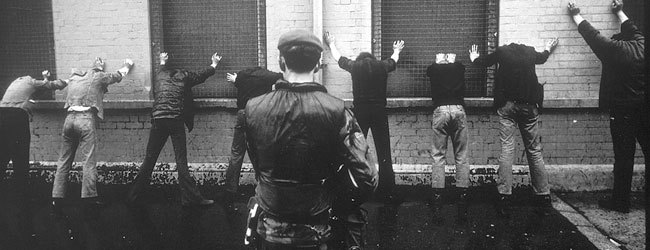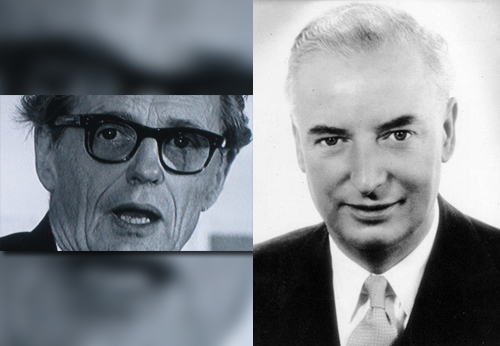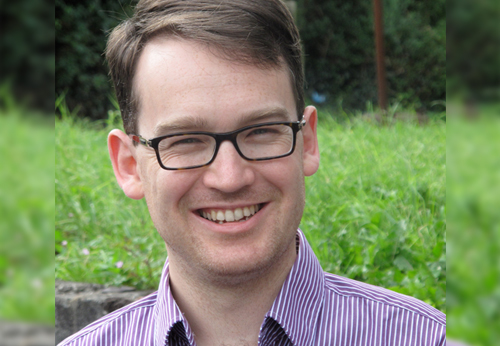THE Irish government has been asked to investigate claims that the British government deliberately withheld the existence of a secret base used to subject 14 internees to what was declared as inhumane and degrading treatment in Northern Ireland more than 40 years ago.
One of the so-called ‘hooded men’ says further investigation is needed into why the British government failed to reveal the true location of the secret interrogation centre at Ballykelly army base when it gave evidence to the European Court of Human Rights (ECHR) in the 1970s.
In January 1978 the European Court of Human Rights found that the British government was guilty of subjecting 14 men to inhumane and degrading treatment after they had been subjected to controversial deep interrogation techniques, including having had hoods placed over their heads and forced to stand spread-eagled against a wall for seven days with little or no food, water or sleep.
Today the Detail speaks to one of the so-called ‘hooded men’ who recounts the physical and mental torture he endured during seven days of deep interrogation.
But Jim Auld says that it is now time for the British government to publicly admit which senior officials in government gave the order for the 14 detainees to be subjected to inhumane and degrading treatment at the secret Ballykelly interrogation centre.
HISTORY OF THE ‘HOODED MEN’Internment was introduced on August 9, 1971 when 342 nationalists were arrested and interned without trial.
What was not made public by the British government at the time was that 14 of those detained had been secretly selected to undergo deep sensory deprivation interrogation techniques.
It is now known that preparations for the use of deep interrogation began six months before interment, when in April 1971, the MoD’s Joint Services Interrogation Wing (JSIW) began training RUC Special Branch officers in Belfast.
The interrogations were to be conducted by Special Branch, with JSIW officers providing ‘technical’ advice.
On August 11 then Stormont Prime Minister Brian Faulkner authorized the transfer of 12 detainees to a secret interrogation site, now known to be Ballykelly, under the Special Powers Act.
The deep interrogation was conducted by 20 RUC Special Branch officers, 12 JSIW advisers, and 26 RUC guards.
Throughout the seven day interrogation the detainees, were hooded, forced to constantly stand spread eagled against a wall, were deprived of sleep, bread and water and subjected to ‘white noise’.
Forty years on Jim Auld and the other 13 detainees have still not been officially informed where they were interrogated.
DID GOVERNMENT WITHHOLD TRUTH ABOUT INTERROGATION FROM EUROPEAN COURT?Evidence given by British government officials to the European Court in the 1970s suggested that the men had been held at Palace Barracks near Holywood and Ballykinler in Co Down.
However documents uncovered at Kew National Archive in London by researchers from the Pat Finucane Centre now confirm beyond doubt that the men were actually held at Ballykelly army base in Co Derry.
In a confidential memo, dated October 1971, the army’s Director General of Intelligence, Harold J. Maguire, outlined that the five techniques of sensory deprivation interrogation used against the Ballykelly detainees had previously been used against prisoners in Malaysia, Kenya, Cyprus, Brunei and Korea.
“In Northern Ireland the RUC (Special Branch) conduct the interrogations and personnel of the Joint School of Intelligence (JSI) are there only to advise and support,” he said.
“It has, however, proved impossible to transfer either the advisory or the training responsibility because no other organisation maintains an interrogation team in being….the only place at which interrogation is taking place of the type which requires advice and support from the Joint School of Intelligence is at Ballykelly.”
Read full secret memo here
Despite Ballykelly being the only location where the detainees were subjected to deep interrogation methods, its use was never disclosed to the ECHR.
However the level at which senior officials within the Conservative government were kept informed of the interrogation techniques being used at Ballykelly is revealed in another confidential memo, which was circulated to Defence Minister Ian Gilmour and the Cabinet Office’s Director of Intelligence Dick White in October 1971.
This memo, which is marked ‘For UK Eyes Only’, outlines the public defence which the government should take to defend its use of hooding, white noise, sleep, food and sensory deprivation on the detainees.
ARMY CHIEF SAID DETAINEES HAPPY TO WEAR HOODS OVER HEADS FOR SEVEN DAYSSenior government officials were told that, Lt Col Nicholson, the army officer who had oversight of the in-depth interrogations at Ballykelly, maintained that the detainees’ allegations of physical and mental torture were untrue and that army interrogators had instructed detainees to lie and say they had been physically abused in order to protect them from retribution from the IRA after release.
JR Nicholson was the senior commander of the army intelligence corps detachment which had been sent to Northern Ireland in 1971 to advise and guide the Special Branch conduct of “deep interrogation”.
He had previously led a five-man detachment to Aden in January 1964 to conduct sensory deprivation interrogation on detainees there.
The government officials were told that in relation to Ballykelly:
“Col Nicholson said that his records showed that the complaints which were before the Compton Committee were largely fabricated. This went back however to the cover story given to the detainees after they had talked to us.”
The senior army officer claimed that most of the detainees had in fact wanted to keep hoods on their heads for seven days “quite voluntarily” and described the sensory deprivation suffered by the detainees as an advantageous “spin-off”.
Despite previous assurances that the detainees had been allowed regular sleeps during the seven day interrogations, the confidential papers instead reveal that in “general” it was only when a prisoner had begun “cooperating” with interrogators that was he allowed to sleep.
Read secret MoD memo outlining ‘official’ time each detainee was made to stand in stress position against a wall here
“However if a man was giving a lot of information and there was more to come the interrogator would want to continue probing rather than let him off the hook at that stage. In some cases an interrogatee could last for a couple of days without sleep.”
Reaffirming the need to keep Ballykelly’s use as an interrogation centre secret, the memo states: “Col Nicholson said that it was very important to keep secure the existence and location of the centre at Ballykelly where the 12 detainees in question had been interrogated.
“It was not publicly known that this centre existed as well as others which were known.”
Jim Auld was a 21-year-old dental technician at the time he was interned and subjected to the special interrogation techniques.
“Officially they said I was made to stand up against the wall for 42 and a half hours but that was nonsense. We were there against the wall morning, noon and night for the seven days. There was no break at all.”
Outlining how ‘white noise’ was used to disorientate the detainees, he explained:
“At the beginning there was a hissing sound in the background. To be truthful in the beginning I hadn’t thought an awful lot of it, but after a few hours it increased in volume and when you were standing against the wall it became the centre of your world. It penetrated your brain because you couldn’t think of anything else. It was a high pitch hissing sound but it became all encompassing. It took everything. You couldn’t think.”
The use of deep interrogation techniques was only officially brought to an end after one of the detainees, Paddy Joe McClean, succeeded in smuggling out a note from Crumlin Road jail to Cardinal Conway, who immediately flew to London and confronted Prime Minister Ted Heath.
By September 1972 the Cabinet Office had declared its Northern Ireland policy ‘in ruins’.
Following the allegations of torture the Irish government took a case to the European Commission on Human Rights, which found the British government guilty of torture.
That judgement was appealed by the British government and in 1978 the European Court of Human Rights ruled that while the British government was not guilty of torture, it had subjected the 14 interrogatees to inhumane and degrading treatment.
Cabinet papers, released under the 30 year rule, now suggest that the failure of internment prompted the beginning of a change in British strategy, moving towards de-escalation.
The British army officially banned the use of the five techniques in Northern Ireland in March 1972.
On 22 March 1972 the Cabinet recognized that a military victory against the IRA was impossible, and chose instead a strategy of de-escalating the conflict.
Dr Huw Bennett is a lecturer in International Politics and Intelligence Studies at Aberystwyth University and has taught in the Defence Studies Department at the Joint Services Command and Staff College at King’s College London.
In 2011 he acted as an expert witness in a high profile legal case where survivors of the Mau Mau Emergency in Kenya successfully sought damages for torture inflicted by the British army in the 1950s.
Dr Bennett says that the introduction of internment and the use of sensory deprivation against the detainees at Ballykelly represented the low point in British security policy in Northern Ireland and a “descent into state-sanctioned criminality that destroyed all remaining legitimacy in the minority (nationalist) community.”
“Enacting deep interrogation in Northern Ireland, despite warnings about the consequences from military advisers, proved a hugely symbolic moment in alienating an entire community,” he said.
“Once allowed the notorious five techniques by their political masters, military commanders were reluctant to give them up, devising elaborate schemes for retaining them in the face of widespread political outrage in Britain and abroad.
“This was because they were deemed highly effective, both in producing intelligence from the small group subjected to the cruel methods, and in instilling fear into a much larger group of people placed under arrest.”
Dr Bennett says that a true assessment of the impact of deep interrogation will be impossible until further archive military document releases enable a comparative understanding of the various other types of intelligence-gathering operations which were in place at that time.
However, he says there is no doubt that internment and deep interrogation contributed towards a large increase in violence.
“Ultimately, the abandonment of the techniques and the decline in the numbers interned shows the government itself thought the measures on balance to be undesirable.
“Subsequently, major reforms in tightening up detention and interrogation practices tried to prevent any future criminal acts by the state.
“But having unleashed security force personnel earlier on, restraining them proved difficult, and civilian attitudes towards the state could not be reoriented simply by issuing a new directive on detention policy.
“The memory of internment and inhuman treatment lingered long after the firearms impounded in August 1971 were destroyed.”
Questioned whether he had ever fully recovered from the mental and physical effects suffered during deep sensory interrogation at Ballykelly, Jim Auld says:
“I certainly haven’t got over it. There’s others who may be in a better position. I have been able to control it.
“The difficulty is that every year from it happened there is an anniversary there and it brings back very painful memories. This is the only time of year I’m willing to talk about it and for many, many years I wouldn’t talk about it because it was too painful.
“It stressed me very much for a long period of time. As the years have gone on I’ve learned to control that stress and one of the main reasons why I would talk about it now is to expose the British government for what they’ve done on its citizens, but also to expose what other countries, particularly the Americans, have been doing because they’ve been doing exactly the same thing. They may have changed some of the techniques but the effects on individuals are exactly the same, particularly people who they’ve kept in Guantanamo or Abu Grab.”
DUBLIN GOVERNMENT ASKED TO INVESTIGATE NEW EVIDENCEConfirming that the Irish government had now been asked to investigate whether the British government had deliberately misled the European Court of Human Rights, a spokesman for the Pat Finucane Centre said:
“In November 1971 an inquiry led by Sir Edmund Compton published its report without any mention of Ballykelly.
“While Compton visited five interrogation centres, Ballykelly was not one of them.”
Similarly a second report into allegations of torture, published the following year, also failed to mention Ballykelly.
The spokesman said that the Compton and Parker reports had now been totally discredited.
“In the 56,000 words of the European Court of Human Rights’ final ruling on the case…there are only two references to Ballykelly.
“This shows the British government misled parliament, the European Commission and the European Court of Human Rights.
“The PFC believes that this was deceptive and probably illegal and has notified the Department of Foreign Affairs in Dublin which is examining the matter. We are also preparing a submission to the Committee of Ministers in Europe.”
Read full transcript of Jim Auld interview here
Read European Court of Human Rights judgement in ‘Hooded Men’ case here
The Pat Finucane Centre will host a talk at Féile today (Tuesday) with four of the detainees giving their own perspective of being interrogated at Ballykelly.
© The Detail 2013


